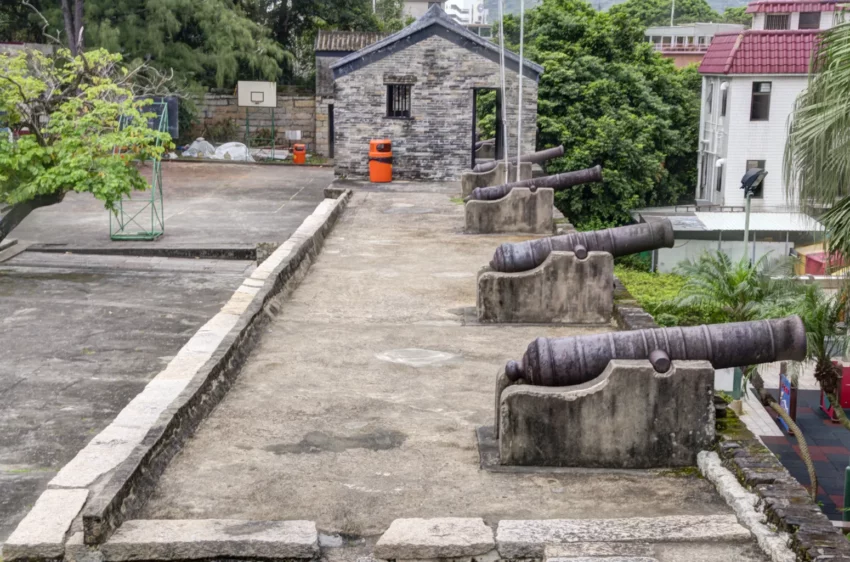Get your dose of History via Email
An Academic Analysis of Tung Chung Fort: Historical Significance and Legacy
The Tung Chung Fort, situated in Tung Chung, on Lantau Island, Hong Kong, stands as a testament to the turbulent historical period of the Qing Dynasty and the defense against British forces during the First Opium War. Erected in the 12th year of the reign of the Jiaqing Emperor, 1817 AD, the fortification holds a strategic position. It is embedded in the historical narrative of the Qing Dynasty’s military strategies and confrontations against foreign forces. In this blog post, we present a factual analysis of Tung Chung Fort’s history, architectural features, and its current status as a preserved historical site, sourced solely from Wikipedia.
Historical Context
Constructed during a period when local piracy was rampant and the need for coastal defenses became evident, Tung Chung Fort was part of a larger network of forts established to protect the territorial integrity of the Qing Dynasty. Following its initial construction, the fort found a new purpose in the 19th century when Hong Kong came under threat during the events of the First Opium War, which lasted from 1839 to 1842 AD. Then, Tung Chung Fort was one of several fortifications instrumental in resisting British incursions.
Structural Description and Features
According to the available architectural evidence, Tung Chung Fort originally housed six cannons and was equipped with corresponding embrasures in its walls. It featured barracks, a magazine for gunpowder, and a watchtower that provided a panoramic view for early warning and strategic defense against advancing threats. The fort exemplifies typical Qing-era military architecture, which is characterized by sturdy granite walls and defensive layouts intended to maximize protective capabilities.
The Decline and Subsequent Uses
After the cession of Hong Kong to the British in 1841 AD, the military significance of Tung Chung Fort diminished. Throughout subsequent years, it served various administrative functions, transitioning from a coastal defense installation to a more civil role. By the end of the 19th century, the fort was repurposed as a police station, a customs station, and eventually, served as rural committee premises until the latter part of the 20th century.
Preservation and Modern-day Relevance
In the contemporary era, Tung Chung Fort has been transformed from an active military and administrative facility to a monument of historical significance. Officially declared a monument in 1979, and subsequently refurbished in 1988, the site is now preserved as a public historical and cultural asset. Visitors to the fort can gain insights into the rich historical tapestry of Hong Kong’s past, while scholars and historians continue to consider its significance in the broader context of Qing Dynasty coastal defense and the socio-political dynamics of the First Opium War’s legacy.
Summary
In summary, Tung Chung Fort’s nearly two centuries-old legacy reflects the multifaceted nature of Hong Kong’s historical development. From its beginnings as a coastal defense fortress built to deter pirates and foreign invaders to its eventual role in local governance and administration, and then to its present status as a preserved monument, the fort remains an important symbol of Hong Kong’s complex past. The preservation efforts ensure that future generations can continue to access and learn from this tangible piece of history.
The analysis presented here is an objective examination based on the historical records and architectural evidence outlined on Wikipedia’s Tung Chung Fort page. This singular source provides a factual account of the fort’s timeline, structural details, historical uses, and current significance. By examining these elements, one gains a nuanced understanding of the fort’s place within Hong Kong’s historical narrative and its continuing relevance in the cultural fabric of the region.

